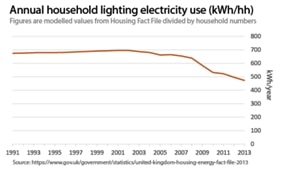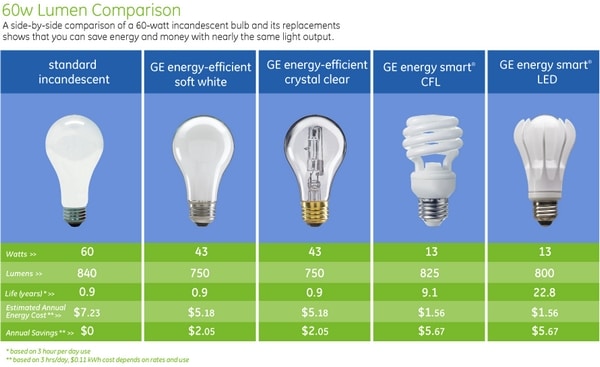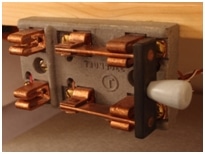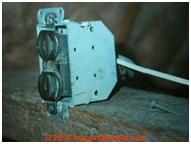Last time, your fellow electrical engineer Pablo told you about his bad experiences concerning grounding. Now he wants to deal with the electrical installations topic and he got 3 questions for you at the end of the article!
There are many differences that I can mention I found among old residential electrical installations (50 years ago) and today’s installation. The energy needs have changed. The main point is the demand, although it is true that today families have greater economic capacity to acquire more electrical equipment is so quite true that the equipment efficiency has improved considerably.
In the following figures can be seen as the average energy consumption has decreased slightly in recent years:
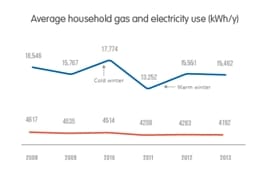
One of the equipment that has improved its efficiency is the electric motor, which is one of the largest energy consumers, 50 years ago efficiency was about from 45% to 75% (it should be clear that this value varies greatly depending on the power and other characteristics) but today is not uncommon to get motors with 90% or more efficiency, which has had an impact on the current demanded by them.
Other circuits has dropped energy demand, lighting has considerably lowered its consumption, from a 60W bulb to a 13W LED or less.
This analysis helps me to raise that the stress caused to electrical outlets and lighting circuits have decreased, so one might think that an old wiring is suitable for the power requirements of today.
Electrical installations quality and efficiency: technical part
Moreover, if we analyze the technical part consisting of wiring, switching and protection devices and electrical installations principles governing the facilities, then we will find a big difference.
I have found particularly in the following cases:
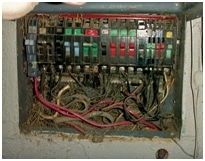
Perfect Electric Services, Inc.
What a mess…
Then, this is an example of an inadequate connection of pipes:
The image shows a typical switch used for many years that even today people believe that will protect the electrical system:
Outlet installation without an effective ground conductor:
Cables can cause short circuit because they are not in proper pipes:
The above are only a few cases of all I have encountered, nothing agrees with actual standards and electrical codes of different countries. While facilities have improved greatly yet we have technicians who maintain the old bad practices but I worry about the engineers who are responsible for the news facilities, with so much literature and information I think we should have better electrical installations, especially from the point of view of safety for people.
But not only knowledge plays an important role, so is the financial part because the budget of many families, particularly in developing countries causes the use of incorrect electrical materials and therefore installations are not suitable, for example the use of 16 AWG wire when the allowed minimum is 14 AWG wire or the elimination of grounding conductor due to high costs that may result.
All this combined with the design part and I pause to comment as an example that many technicians and engineers do not know the use and benefits of the differential interrupter has caused that we cannot greatly improve electrical installations.
My opinion is that continuous training coupled with deeper inspections of government and technical organizations are the best way to correct and prevent these numerous problems and errors continue to occur.
I hope to write another article about how we can correct these errors and improve the old electrical installations for the purpose of obtaining better, in line with the current requirements of the standards and electrical codes.
Before really saying goodbye I want to make the following questions:
- In your experience have you found problems similar to those raised?
- Do you think that technicians are sufficiently prepared to perform a free-error electrical installation?
- Do you think that is considered an overstatement when I mention that engineers make mistakes in designs?
Waiting for your answers,
Pablo.
